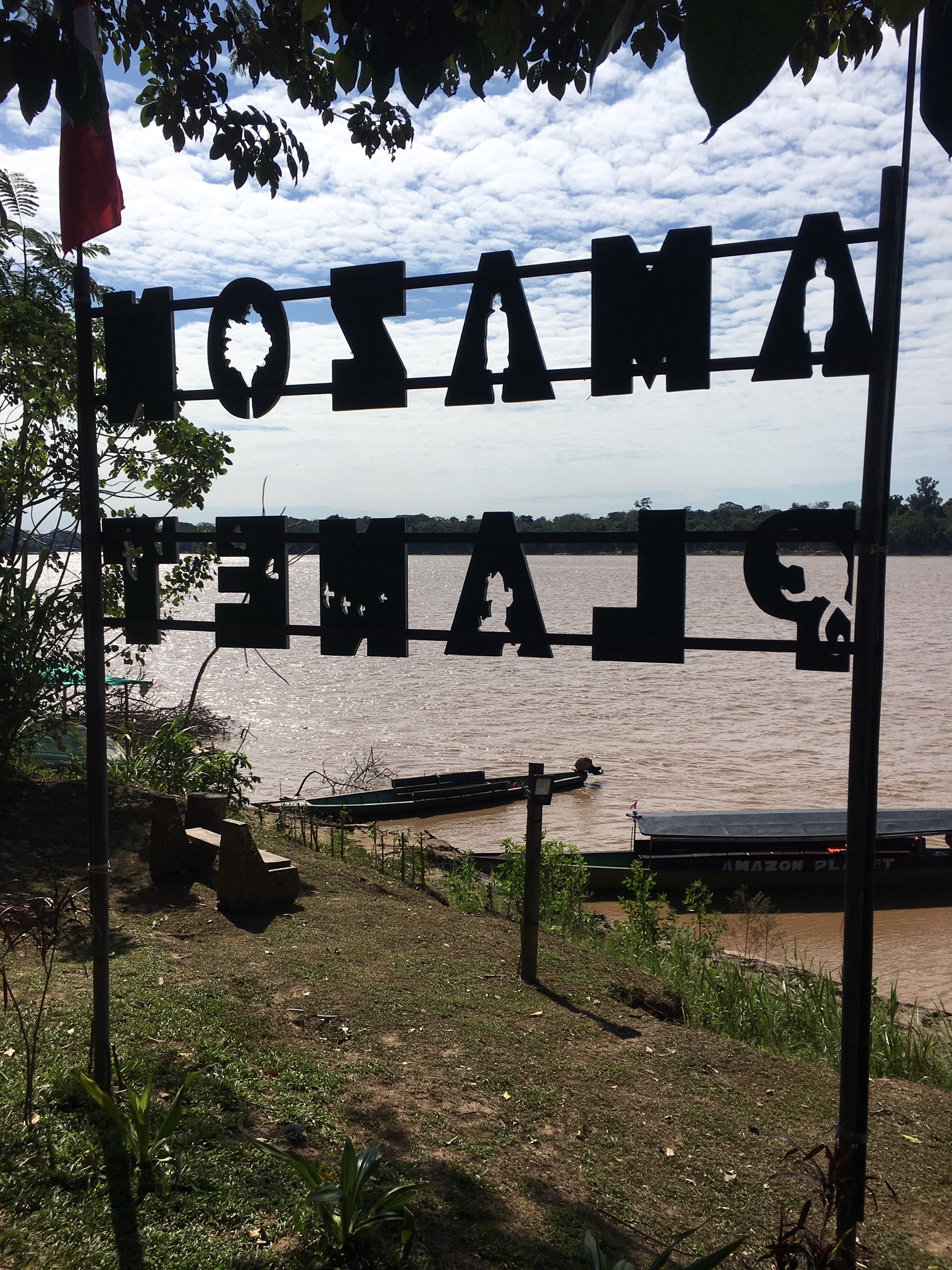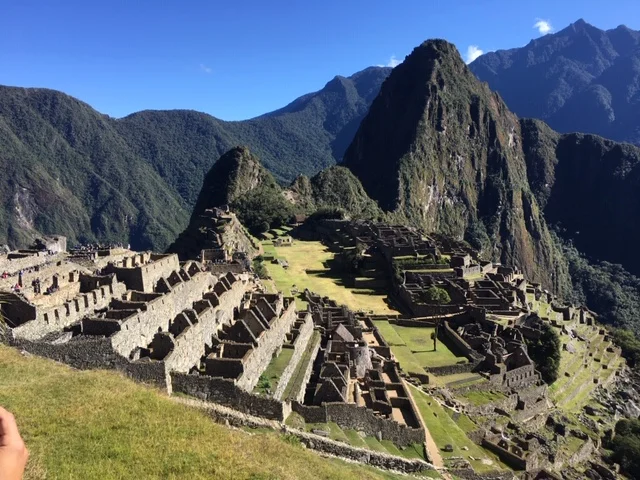Travel Blog Peru - Madre de Dios, Peruvian Amazonia (26th-29th July 2019)
Although I had worked and travelled in Brazil for 6 months in 1987/88, I had never been to the Amazon proper; the closest I had gotten was Belem, the city where this slow-flowing, broad, meandering, and over 6,400km-long river springing from Peru flows into the Atlantic.
I had seen the Nicaraguan jungle in the boat down from Managua to the Caribbean Coast, manned with a soldier and machine gun atop the boat as protection against any Contra attacks, but had not taken many walks into this most fertile and alive flora and fauna. When we finally did that, accompanied by our knowledgeable and charming guide Jose, on this, the fifth and last segment of our Peruvian adventure, it reminded me of weekends spent with Kesia and PL just outside Sao Paolo in their ‘sitiu’, a simple getaway hut in the coastal Brazilian rainforest known as the ‘mata atlantica’.
Peru is separated into three geographic regions: Costa (the fertile coastal plains), Sierra (the Peruvian section of the Cordilleras, the spinal-cord mountains running down the western part of Latin America just as the Rockies do through Canada and the US), and Selva, the forest; THE forest! The lung of the world, the biggest CO2 absorber, the highest density and abundance of life on earth! (One hectar of Amazon rain forest is said to contain more species than any European country.)
Peru, which had been a military dictatorship from 1968-1980, and which in the 1980 and 1990s experienced a bloodbath during a dirty war with Maoist guerrilleros of the Shining Path, had the prescience to declare large parts of its very sizeable Amazon selva a national reserves; as early as 1977 UNESCO declared the Manu national park a Biosphere Reserve, and a World Heritage site in 1987. While the Amazon constitutes 60% of the country, it contains only 5% of the population of approx. 32 million.
From Maldonado, the capital of the Madre De Dios province in the southern part of the Peruvian Amazon, we went 75 min by longboat on the river by the same name to arrive at Amazon Planet, a highly recommended lodge and tour base in the Tambopata reserve. On the first evening, our guide Jose took us on a nightly walk thought the rainforest.
His specialty on this first eve was to lure tarantulas out of their hiding - first the small ones, and then the mothership - a truly frightening piece of spider, eight large legs and looking ready to go for the kill (see videoclip). He then explained that the life experience of the adult female was 15 years, but of the male a mere 5-8 years; why? Well, if he did not get away quickly enough after mating, he was done for; so much for an extra tickle to making out ... modern man, sometimes given to feeling sorry for himself to have to fulfil both old fashioned male role models as well as being a sensitive, empathic, feminist 21st century partner to his female partner, might reconsider his plight ...
That this was the jungle, where dog eats dog, became even clearer on the next day, when we went spying for the shy caiman, a smaller brother of alligator and crocodile. The children stay with the mother for some time after birth, but better don’t outstay their welcome, lest the cannibalistic mother has her offspring for breakfast on an off day ... as I pondered our grown and assertive four daughters, 2 1/2 weeks into the joint family trip that is 24/7, the thought crossed my mind that they are also probably looking forward to giving their dad a parental break ...
While we read a lot these days about the increasing pace of deforestation of the Brazilian Amazon under Bolsonaro -- it being a sad irony of our times that the president of the county with the lung of this earth, the Amazon, and POTUS, the country with the highest energy consumption per capita among developed countries, both don’t believe in global warming despite the overwhelming evidence -- we visited an uplifting 15-year old project of rehabilitating wild animals and preserving their populations and habitats - starting with turtles, tapirs, bears, Ara parakeets, amazingly acrobatic spider monkeys, and the very loud howler monkey, whose aircraft-like territorial shout can be heard for 5 km - run by a British biologist and volunteers from all over the world. (see https://taricayaecoreserve.com/).
When the volunteers came over to Amazon Planet lodge in the late afternoons, the infectious youthful joy and play and banter while playing football reminded me of the joie de vivre of the Brazilian beach kids depicted in the novels of Jorge Amado, whom I had read during my Brazilian sojourn.
For the n-th time on this ‘vacation’, there were 3am or 4am rises to get a move on, catch the early bird, move upriver. At times we felt like the US captain in search of Marlon Brando in Apocalypse Now, on board a boat with jungle all around us moving into the unknown. When the sunrise touched us with its manifold shades of orange and gold, one could be forgiven for hearing Wagner’s Ryde of the Valkyries as the helicopters prepared for the napalm attack. Digital memories overlaid on reality.
On our penultimate day, it finally turned 25-30 degrees, the Latin America temperatures that we always liked, as we visited beautiful lake Sandoval by rowing longboats, spotting a family of giant otters, playful families of capuchin monkeys rummaging for fruit along the waterline, feeding piranhas, and observing a stoic 2m long black caiman drifting by - pretending to be a piece of wood.
Not to forget the ‘ejércitos de hormigas’ (armies of ants and termites) that displayed incredible discipline and Weberian work ethic in their communal efforts; those who remember the last scene in Gabriel Garcia Marquez’ ‘One Hundred Years of Solitude’ will remember what these little animals are capable of ...
July 28 also happened to be Peru’s 198th Independence Day, and the team at Amazon Planet were all decked out in the national colours of red and white, put on a showcase of Peruvian cuisine (which must be the continent’s best and most diverse south of Mexico), as well as a soccer game between staff and guides, in the avuncular and jolly atmosphere that we had come to know and appreciate from these friendly and modest people over the last three weeks.
This country and its people have grown on us. Gracias Peru. We shall be back!
[Once again, La Niña mala disappeared without trace from our narrator’s life, leaving him feeling empty, desolate, senseless. And again, not only had the woman he loved more than anything else left him with apparent disinterest and disdain, his last Peruvian friend in the European diaspora, the hippy-turned-equestrian painter that had led him back to her, contracted aids, then the new mystery disease predominantly affecting gays and bisexuals like his friend, and he died in front of his eyes. Having contacted his parents and see them collect the remains of the lost son, he departed for Paris and buried himself in more work to overcome his emptiness and despair, inter alia translating some of Chekov’s tales.
He befriended one of his translator colleagues, a man of 12 languages but few friends, who - having been deserted by his Polish fiancé in Berlin years ago, weeks before their wedding - had only believed in purchasable ‘love’, left for a contact in Tokio and fell deeply in love with a Japanese lawyer colleague of his. In one of his letters from Tokio, he adds a postscript: ‘greetings from the Nina mala’.
Ricardito cannot but arrange to travel there, even though he is told she lives with a loathsome elder Japanese man, whom he makes out to be a Yakuza gangster. And indeed, upon arriving and meeting Kuriko, as she is now known, she tells him that she is in thrall to this man, both as his employee smuggling allegedly aphrodisiac rhino and elephant horns from frequent travels out of Africa, and as his lover, or more appropriately his ‘puta’, as she is one of several women in his ‘service’. El Niño bueno, who feels that she is for the first time beholden to someone else and not just using the men in her life, turns jealous, and yet more desiring of her at the same time. She is more beautiful and flirtatious than ever, despite approaching her mid-40s, and she shows him Tokio’s sights and makes love to him again.
Meanwhile it turns out that his translator friend, Salomon, is completely besotted by his Japanese love, caressing and kissing her in public to her increasing apparent discomfort. After a joint dinner of Kuriko and her Japanese man, Salomon and his girlfriend, and Ricardo, La Niña mala - having assured him that they are alone in the gangster’s sumptuous house - seduces him in a manner that he has never experienced, proactive, teasing, supremely affectionate, including blowing him as he has asked her to for two decades. Just as he climaxes, he sees the gangster out of the corner of his eye, and it dawns on him that her sexual transformation and attention is all just to serve the perverse libidinous desires of this peeping Tom.
The ensuing emotions can only be properly appreciated from the original Spanish. When he challenges her, she hits him and shouts:
“Te creías que iba hacer esto por ti, muerto de hambre, fracasado, imbecil? Pero, quien eres tu, quien te has creido tu? Ah, te morirás si supieras cuanto te despreció, cuanto te odio, cobarde.”
(‘Did you think I was going to do this for you, starving no-good, you failure, you imbecile? Who are you, who do you think you are? Well, you would die if you knew how much I disavow you, how much I hate you, you coward.’)
One does not have to be a psychologist to be able to glimpse his emotions, but Vargas Llosa does a painfully beautiful job expressing them:
“Estuve horas con la mente in blanco, desvelado, sintiéndome una porqueria humana impregnada de estúpida inocencia, de ingenua imbecilidad.”
(‘I lay there for hours with a blank mind, sleepless, feeling like a human piece of shit, inundated with stupid naïveté, an imbecile of disingenuous proportions.’)
He hurriedly travels back to Paris, and concludes to delete her from his life, for all times. A letter reaches him from Salomon’s Japanese girlfriend, informing him that she has terminated that relationship, upon which Salomon has committed suicide ...
She has now left him three times, and three of his friends are no longer, their deaths each time coinciding with an abrupt break in this heart-breaking love addiction of his. We are on page 221 of 418 - how long can this suffering go on??
With the Peruvian journey now at its end, you will have to wait a little for the final instalments on this novel ...]














